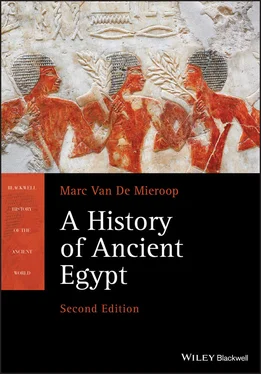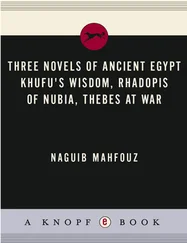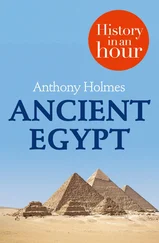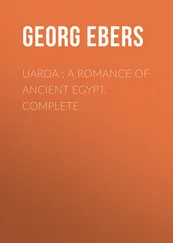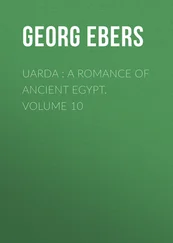The earliest inscriptions show little else than the royal name, but in the mid‐1st dynasty they become more elaborate. From the reign of King Den, around 2900, derive many labels that contain multifaceted statements ( Figure 2.6). One of them shows the king’s name in the serekh written with the phonograms d and n. The right side of the label is lined with the sign for year and next to it is a depiction of the sed ‐festival, which we read as a year name. The label also gives the name of an official, Hemaka, and his title “seal bearer of the king of Lower Egypt,” and it indicates that oil was involved in the transaction recorded. The reading of such a label is still highly impressionistic as it merely shows names, titles, and words without indicating their grammatical relationship. In the 1st dynasty the order of signs was also very loose, and modern decipherers have to read them by analogy with what would make sense in later Egyptian texts. But the uses of writing certainly increased and the first known roll of papyrus, with no signs on it, comes from the tomb of Hemaka.
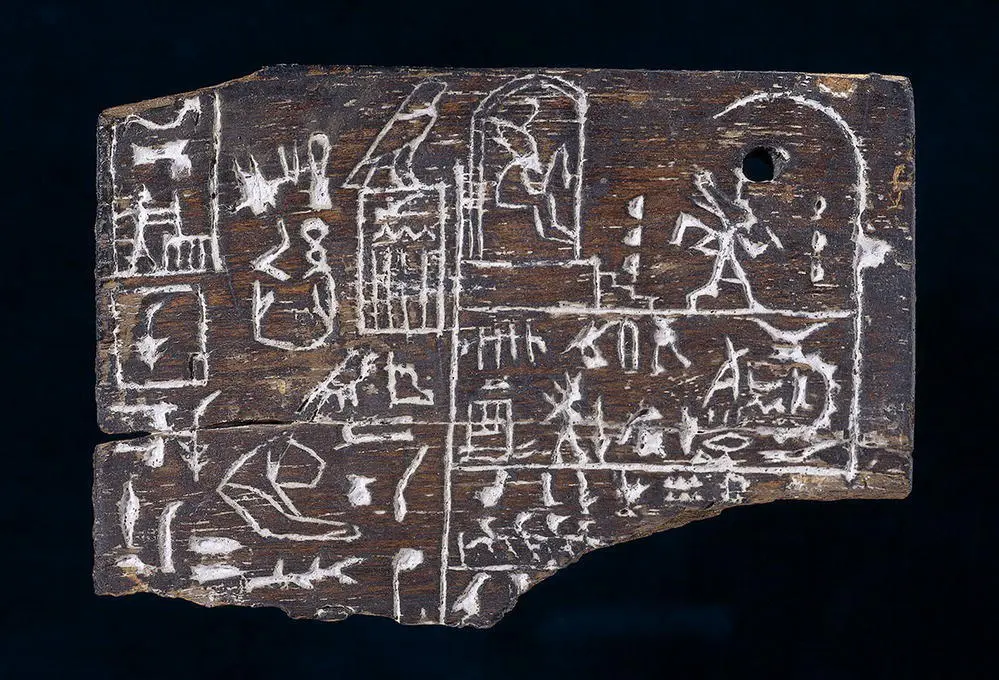
Figure 2.6 On this label of ebony wood, 8 by 5.5 cm, the upper right panel shows King Den during the sed ‐festival. Wearing the double crown, he both sits in a booth and runs in an area delineated by six markers. The vertical text on the left side includes the king’s name and that of Hemaka, seal bearer of the king of Lower Egypt. The label mentions a kind of oil and a building processing it, and was originally attached to an oil container. British Museum. London.
Source: The Trustees of the British Museum / Art Resource
Perhaps the first preserved continuous sentence in Egyptian script that indicates all elements of the spoken language appears on a sealing of the reign of Peribsen of the mid‐2nd dynasty, “Sealing of everything of Ombos (Naqada): He of Ombos (i.e., the god Seth) has joined the Two Lands for his son, the Dual King Peribsen.” 2 It shows a fully developed script, but not the final stage of hieroglyphs’ evolution. The number of hieroglyphic signs varied over time. While initially one or two thousand appeared, they were reduced to some 750 in the Middle Kingdom when spellings became institutionalized in schools. In the Greek and Roman periods, however, scribes created many new signs for religious and monumental texts (see Special Topic 2.2).
Why did the Egyptians invent writing? The earliest preserved records were administrative in character, keeping track of the movement of goods, and it is logical that a state of Egypt’s size and complexity required a flexible system of accounting that could keep information on the nature of goods, their quantities, provenance and destination, the people in charge of them, and the date of the transaction. In Babylonia, where writing originated around the same time, bureaucratic concerns are obvious in the earliest texts, and many scholars suggest the same impetus in Egypt. But others stress how important display was in the earliest Egyptian inscriptions. The visual commemorations of the unification of Egypt, the tomb steles inscribed with nothing but the serekh , and many other inscriptions of the 3rd millennium have no bureaucratic goal, but honor the gods and the king. Throughout Egyptian history the hieroglyphic script was prominently displayed to celebrate someone or something. The glorification of the king may have been one of the driving forces in the script’s invention. If not, it was certainly soon adopted for that purpose.
Special Topic 2.2 Languages and scripts of ancient Egypt
No one today speaks the ancient Egyptian language, and we can only reconstruct it through the documentation of the past. The written record of ancient Egyptian is spread over an enormous time span. It is clear that the language the writings rendered changed constantly due to both internal and external influences. Moreover, despite the great conservatism in writing, practical considerations pushed the Egyptians to adapt the script for its diverse usages, and they used several forms simultaneously. We cannot speak then of a single Egyptian language and script, but of multiple stages and various scripts.
Egyptian is an Afroasiatic language combining elements found in such North African language groups as Berber with Semitic characteristics. It stands alone within the languages of Africa because of its closeness to Semitic, which reflects the geographical location of Egypt. The history of the language needs to be pieced together from written evidence that did not mirror the changes immediately. We identify several stages. The Old Egyptian form, known primarily from official inscriptions, was relatively close to Middle Egyptian, which was written from around 2100 to 1750. Middle Egyptian became the classical language of Egypt, because authors used it to compose the literary works that Egyptians continued to copy out for centuries later on. It is the form of the language that modern students of Egyptian initially learn. In the New Kingdom starting around 1500, the Egyptians spoke the Late Egyptian form that gradually appeared in their business documents and letters. By the 7th century, Demotic took over, also mainly found in writings of daily use. In the 4th century AD, the Christians of Egypt began to write the Coptic form of the language, which survived as a vernacular into the 12th century and is still used in the liturgy today.
The changes in the script do not necessarily reflect changes in the spoken language, although we use the same terms to refer to the different stages of both. Four basic scripts appear: hieroglyphic and its derivatives hieratic and Demotic, which all use a mixture of logograms and phonograms, and Coptic, an alphabet. Hieroglyphic – a Greek term that means “sacred carved writing” – is pictorial and requires great care in writing. It was reserved for monumental and ornamental inscriptions until AD 395. Some less elaborate forms, which we call cursive hieroglyphs, appear in religious texts. Probably from the very beginning, scribes used a rapid way of writing hieroglyphs for everyday purposes. We call that script hieratic – a Greek term meaning “priestly” ( Figure 2.7). From the early 1st millennium on some monumental inscriptions in hieratic script appear.
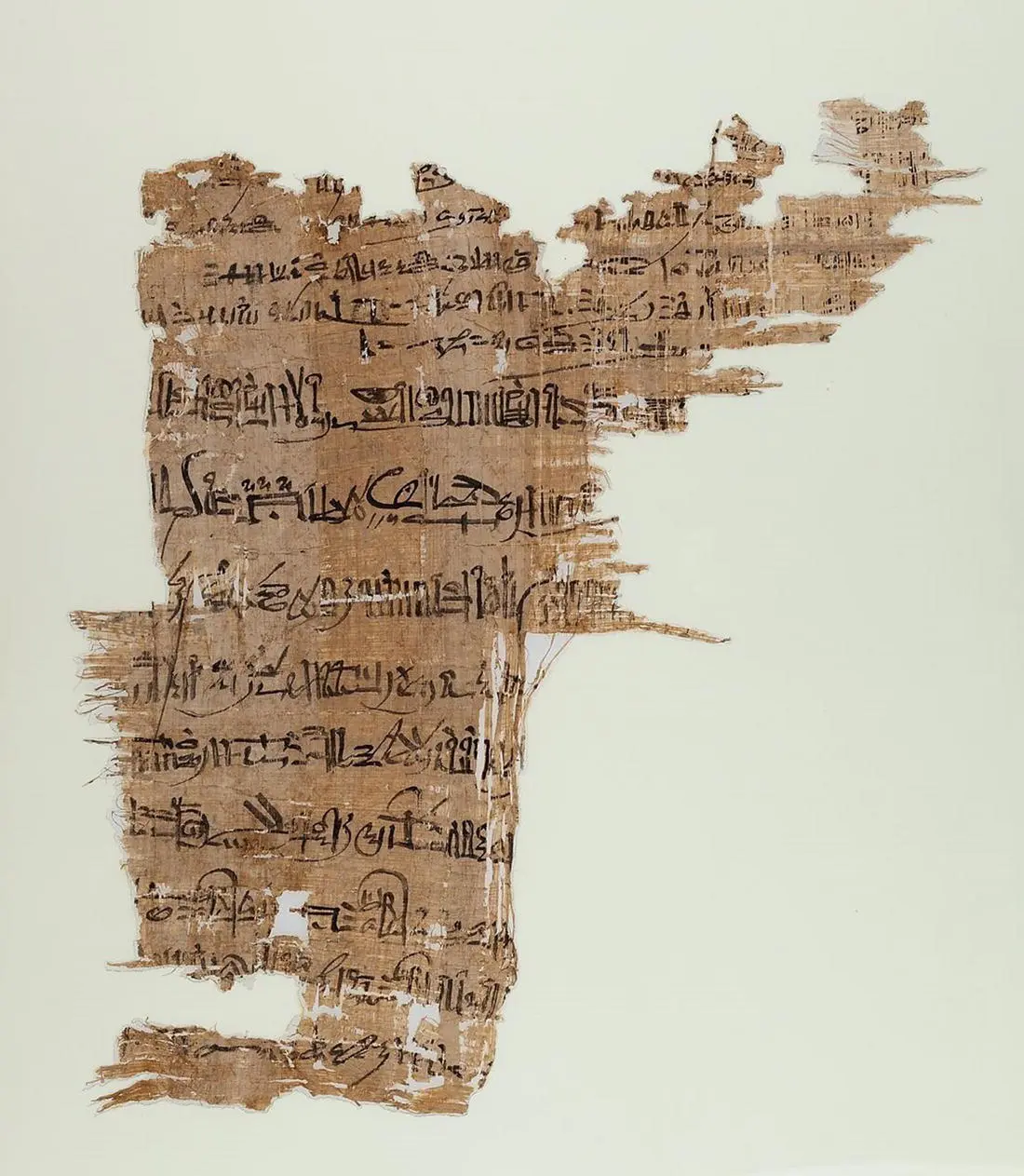
Figure 2.7 Hieratic script was a rapid form of hieroglyphic initially used for documents of daily use. The papyrus fragment here, 35 by 19 cm, contains a letter between two fan‐bearers of the king and a fragmentary record of the cultivation of pharaonic lands in year 16 of Rameses III. As papyrus was expensive, the reverse was used later for an account. The papyrus probably comes from the Memphis region. Metropolitan Museum of Art, O.C.3569.
Source: Museum Accession
In the mid‐1st millennium people also started to write Demotic – the Greek for “of the people” – a script that today requires specialist training to read as it has little obvious relationship to hieroglyphic or even hieratic, from which it descended (see Figure 1.6). The Egyptians used it to write business documents and literature, and gradually also religious and some monumental texts. After Alexander’s conquest of Egypt in the late 4th century, Greek became a parallel language of administration and literature. The famous Rosetta Stone, key to the modern decipherment of the hieroglyphic script, contains the same royal edict in hieroglyphs, Demotic script, and Greek (see Chapter 13).
Читать дальше
